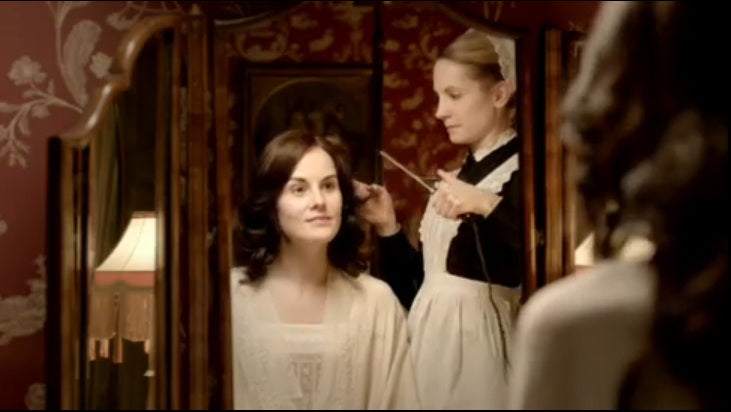The History of The Curling Iron
Sit down and open your textbooks - class is in session. Today we’re diving into the history of a hair tool that is, today, an indispensable part of our beauty arsenal. With their ability to transform straight hair into bouncy curls or add waves for that effortlessly chic look, these styling devices have become a staple in salons and households alike. But have you ever wondered about the origins of this versatile hair tool? Join us on a journey through time as we weave our way through the history of the curling iron.

Ancient Beginnings
The desire to style and manipulate hair is not a modern phenomenon. In fact, evidence suggests that ancient civilizations such as the Egyptians, Greeks, and Romans employed various techniques to curl or wave their hair. Methods ranged from using heated rods to wrapping hair around objects such as sticks or shells and even employing chemical processes involving lye and other substances.
18th and 19th Century Innovations
The 18th and 19th centuries saw significant advancements in hair styling techniques. During this time, heated metal rods or tongs became popular for curling hair. These implements were heated in the fire or on stoves before being applied to the hair, often resulting in less-than-ideal outcomes due to uneven heat distribution and the risk of burns.

The Industrial Revolution
The Industrial Revolution brought about significant changes in manufacturing processes, leading to innovations in the beauty industry as well. In the 19th century, inventors began experimenting with new materials and designs for curling irons. One notable development was the introduction of the Marcel wave, a popular hairstyle characterized by deep waves or curls, named after the French hairdresser Marcel Grateau, who invented the heated curling iron used to create it.
Electricity and the Modern Curling Iron
The advent of electricity in the late 19th and early 20th centuries revolutionized the beauty industry, paving the way for the development of electrically heated curling irons. These early electric curling irons featured heating elements powered by electricity, eliminating the need for heating them manually. However, safety concerns and technological limitations meant that these early models were not as efficient or user-friendly as their modern counterparts.
Technological Advancements
As technology continued to advance, so did the curling iron. Throughout the 20th century, engineers and designers refined the design and functionality of curling irons, introducing features such as adjustable temperature settings, ceramic coatings for smoother styling, and various barrel sizes to accommodate different hair types and styles.
The Rise of Curling Wands and Specialty Tools
In recent years, the beauty industry has witnessed a proliferation of curling wands, clampless curling irons, and other specialty styling tools. These innovations offer users greater versatility and control over their hairstyles, allowing them to achieve a wide range of looks, from loose beach waves to tight curls, with ease.
From ancient civilizations to the modern era, the curling iron has undergone a remarkable evolution, driven by technological advancements and changing beauty trends. Today, this humble styling tool continues to play a huge role in helping individuals express their personal style. As we look to the future, it's exciting to imagine what new innovations lie ahead for the beloved curling iron. Will Helix be part of that innovation? Time will tell.

